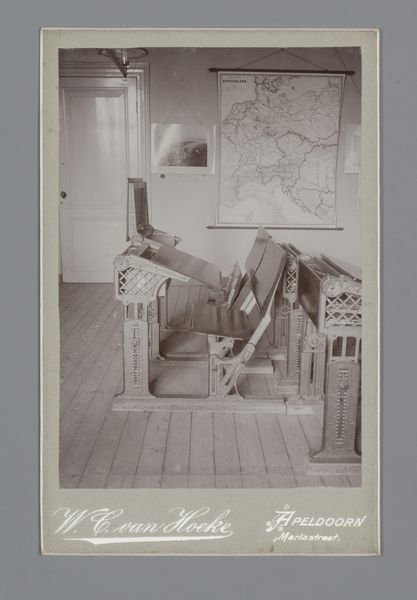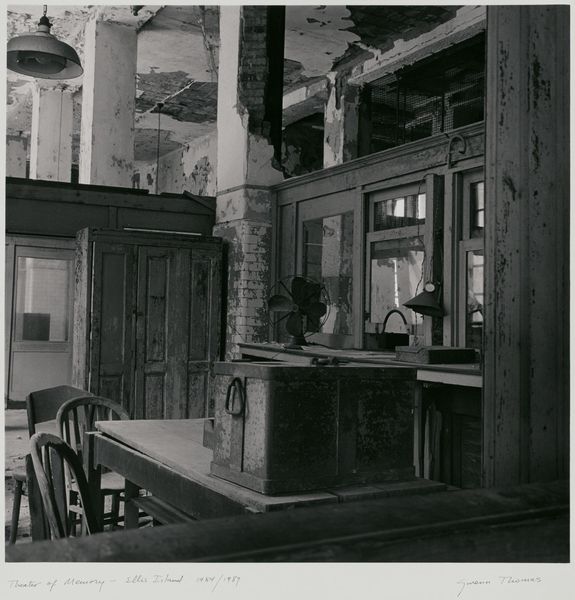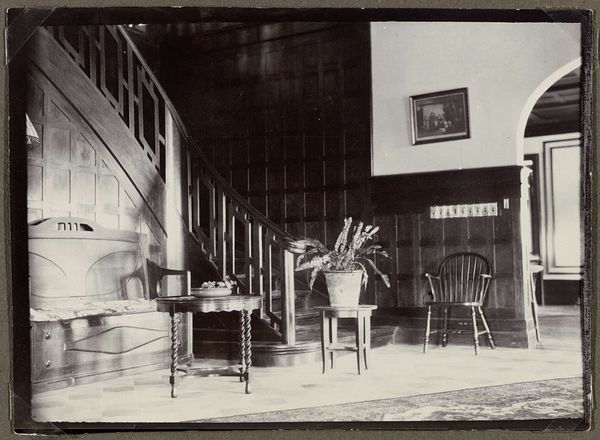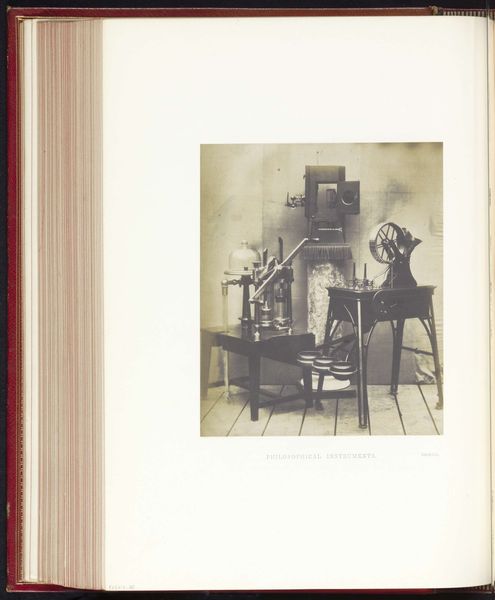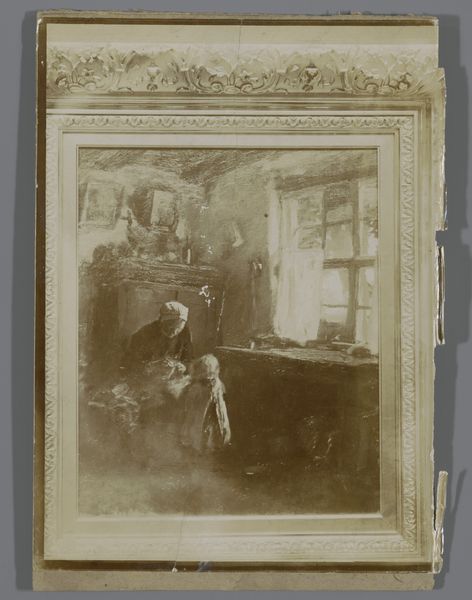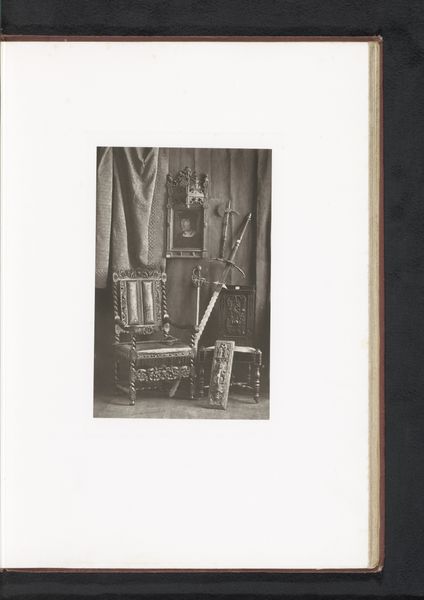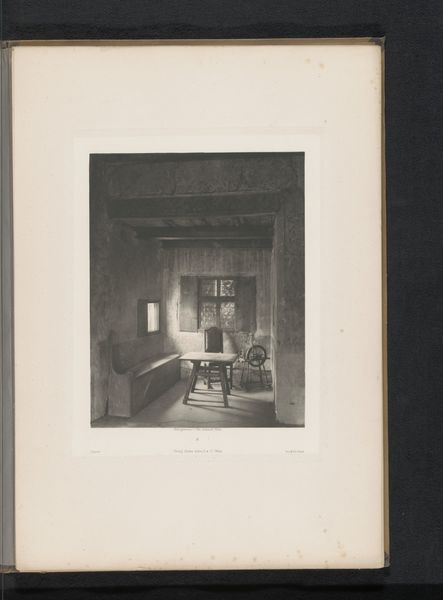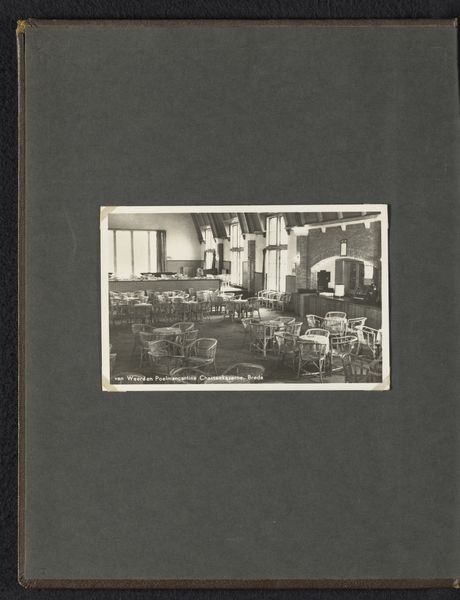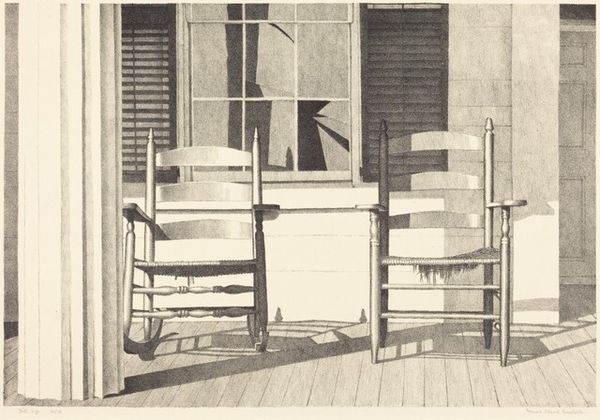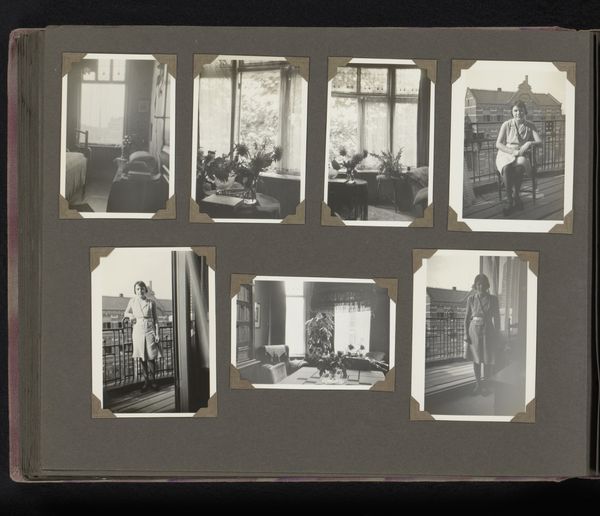
Klaslokaal met schoolbanken, geografische wandkaart en ketels 1892 - 1917
0:00
0:00
photography, gelatin-silver-print
#
photography
#
gelatin-silver-print
#
genre-painting
#
realism
Dimensions: height 164 mm, width 105 mm
Copyright: Rijks Museum: Open Domain
Editor: Here we have Willem Cornelis van Hoeke's photograph, "Klaslokaal met schoolbanken, geografische wandkaart en ketels," dating from around 1892 to 1917. It’s a gelatin-silver print of a classroom. I'm struck by the austerity of the room – the hard lines of the desks and benches. What’s your take on this piece? Curator: What intrigues me is the labor embedded in every object here. Think of the wood: felled, sawn, planed, joined, polished. Consider also the social context, with each item shaped by societal attitudes towards education and its industrial underpinnings. And those meticulously placed kettles? They hint at basic sanitation standards – another manifestation of labor. What kind of labor produced these objects? Were they made in a factory? Editor: That's a really interesting perspective I hadn’t considered. I was focusing on it being almost bleak. Do you think that focus on production also shifts our understanding of realism as an artistic style? Curator: Absolutely. Realism often obscures the means of its own making. The artist, in choosing to photograph this classroom, makes an argument for visibility. Who benefits from this portrayal? The act of documenting such spaces normalizes particular ideologies and modes of production within a quickly transforming industrial society. Think of it this way: Photography's widespread adoption hinged on the labor and availability of its constituent materials—glass, silver, chemicals. Does understanding those relationships change your view? Editor: Yes, definitely! Focusing on the materials and labor makes me realize how much more there is to this seemingly simple image. I had not considered how realism relies on complex social and economic structures! Curator: Exactly! By interrogating materials and production, we challenge established boundaries between what constitutes "high art" versus mundane craft, revealing networks of relations behind objects and images we typically take for granted.
Comments
No comments
Be the first to comment and join the conversation on the ultimate creative platform.
